
For Consumers
For Consumers
For Consumers
For Consumers
RSV is a common virus—one that can be very serious for high-risk babies
Respiratory syncytial (sin-SISH-Shull) virus, or RSV is a common virus that many parents may not have heard of. Like the flu, RSV is a seasonal virus that is easily spread. In fact, most children will get RSV by the age of 2. RSV begins with cold-like symptoms but can spread to the lungs.
For babies with certain health conditions, RSV can be very serious.
Preemies
Infants who are born prematurely (born at 35 weeks or less), and who are 6 months of age or younger at the beginning of RSV season
Babies with lung issues
Infants who have a chronic lung condition known as BPD/CLDP (bronchopulmonary dysplasia/chronic lung disease of prematurity) that required medical treatment within the previous 6 months, and who are 24 months of age or younger at the beginning of RSV season
Babies with heart issues
Infants who have a heart condition known as HS-CHD (hemodynamically significant congenital heart disease), and who are 24 months of age or younger at the beginning of RSV season
A premature baby (≤35 weeks gestational age), 6 months of age or younger at the start of RSV season, is at especially high risk for severe RSV disease. That's because they were born before their lungs and respiratory system could fully develop.
Unlike a full-term baby, a premature baby is also born with fewer antibodies transferred from their mother, making it more difficult for the baby to fight off infection.
Click on the buttons below to see lung development of babies born prematurely compared to those born full term.
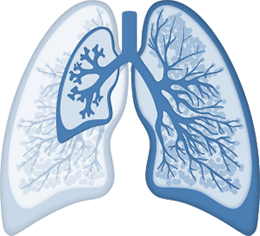
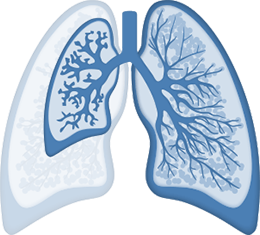
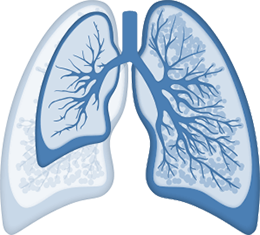
Preterm
Full Term(≥40 weeks GA)
34% of lung volume 60 mL vs 180 mL 26% of lung surface area 1.19 m vs 4.55 m
As you can see, the lung volume of premature infants is less than that of full term infants. A premature infant’s airways are also smaller and narrower than a full-term baby's.
Even after premature infants start to look healthy and strong, they still remain at high risk for severe RSV disease.
If your baby is at high risk for severe RSV disease, talk to your doctor about SYNAGIS and the best way to protect their lungs.
Click on the buttons below to see lung development of babies born prematurely compared to those born full term.



Preterm
Full Term(≥40 weeks GA)
34% of lung volume 60 mL vs 180 mL 26% of lung surface area 1.19 m vs 4.55 m
As you can see, the lung volume of premature infants is less than that of full term infants. A premature infant’s airways are also smaller and narrower than a full-term baby's.
Even after premature infants start to look healthy and strong, they still remain at high risk for severe RSV disease.
If your baby is at high risk for severe RSV disease, talk to your doctor about SYNAGIS and the best way to protect their lungs.
Symptoms to watch for, especially during your baby's first months at home
While RSV is a common virus that affects almost every child by the age of 2, most babies only experience cold-like symptoms. But severe RSV disease can send some babies to the hospital.
If you see any of these warning signs of severe RSV disease, call your baby's doctor right away:
Coughing or wheezing that does not stop
Fast or troubled breathing
A fever (especially if it is greater than 100.4°F [rectal] in infants under 3 months of age)
A bluish color around the mouth or fingernails
Spread-out nostrils and/or caved-in chest when trying to breathe
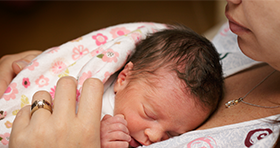
RSV is the leading cause of hospitalization of babies less than a year old
RSV is a widespread virus that affects almost every child by the time he or she turns 2 years of age. It can infect the lungs of your premature infant and, in some cases, cause severe RSV disease, leading to hospitalization.
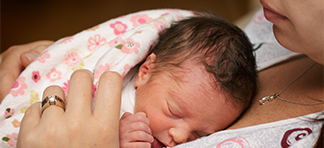
Premature infants are at especially high risk
Premature infants (≤35 weeks GA) are twice as likely to be hospitalized for RSV-related symptoms than infants born at full term in their first 6 months of life. And the length of stay for a premature infant can be twice as long as that of an infant born at 40 weeks.
Infants with certain heart and lung conditions are also at high-risk
Babies who have conditions such BPD/CLDP or HS-CHD often have weak lungs or other health issues. For these babies, RSV can cause bronchiolitis (swelling of the lower airways of the lungs) or pneumonia.
BPD/CLDP stands for bronchopulmonary dysplasia/chronic lung disease of prematurity.
HS-CHD stands for hemodynamically significant congenital heart disease.
PLAY VIDEO
SYNAGIS is a prescription medication that is injected (50 mg and 100 mg) in certain children to help prevent serious lung disease caused by respiratory syncytial virus (RSV). You should know that SYNAGIS is used to prevent RSV, and not to treat children who already have RSV, including children:
SYNAGIS is a prescription medication that is injected (50 mg and 100 mg) in certain children to help prevent serious lung disease caused by respiratory syncytial virus (RSV). You should know that SYNAGIS is used to prevent RSV, and not to treat children who already have RSV, including children:
You Should Know: It is not known if SYNAGIS is safe and works in children who are over 24 months old when they started taking SYNAGIS.
You Should Know: SYNAGIS may cause severe allergic reactions.
You Should Know: SYNAGIS is given by injection. If the child has a problem with bleeding or bruises easily, an injection could cause a problem.
Before the child takes SYNAGIS, you should tell the child’s healthcare provider about all their medical conditions and medicines including vitamins, supplements, and herbal remedies.
The most common side effects are fever and rash.
You Should Know: These are not all the possible side effects for SYNAGIS. For more information, ask the child’s healthcare provider or review the full Prescribing Information for SYNAGIS, including Patient Information.
If you suspect that a child has experienced a side effect, call the child’s healthcare provider. You may also report side effects to Sobi North America at 1-866-773-5274 or the US Food and Drug Administration (FDA) at 1-800-FDA-1088.
AstraZeneca has transferred all rights to SYNAGIS (palivizumab) to another manufacturer, Swedish Orphan Biovitrum AB (SOBI), in January of 2019. If you need SYNAGIS support, please contact SYNAGIS CONNECT® at (866)-285-8419(866)-285-8419.